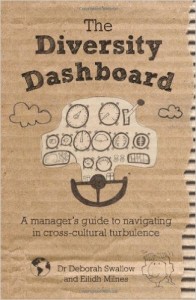Develop Cultural Intelligent Leadership!
When travelling around the world or even just ‘flying from your desk’ there are a few basic rules you need to understand to navigate successfully across cultures. Watch the video below for ‘Interculture Tips on how to work in culturally diverse teams.’ By developing culturally intelligent leadership, you and your colleagues will reap dividends: building on brand reputation, increasing your customer retention and adding to your bottom-line. By avoiding cultural mistakes, you protect your relationships and improve productivity. This video will give you a taster and the links below will help you with a deeper understanding.
The number one rule, I always emphasis, is: Don’t be in a hurry!
Most cultures enjoy building a relationship first, so greetings and introductions are always important (and business cards!). With cultures like these, you will need to allow more time for meetings and negotiations than originally anticipated as only a few cultures run by the clock. Focus on the relationship more than doing the deal, at first, because it is the relationship that will sustain you through the ups and downs of international business. After all, how can people trust you in business if they haven’t learned how to trust you as a person?
The Links below will give you some more hints and tips for successful international business:
Advice For Someone Planning To Work Abroad
12 Tips For Global Business Travellers
Common Sense Advice To Get More Business From Your Business Card
The Art Of Business Card Giving: An East West Perspective
Top Ten Tips On Passing Business Cards With Cultural Fluency
Want to know more? Want to develop culturally intelligent leadership?
Then pick up a copy of my latest book today: “The Diversity Dashboard – a mangers guide to navigating in cross-cultural turbulence”.
 Written with my colleague, Eilidh Milnes, ‘The Diversity Dashboard’ is a quick reference guide that aims to help managers to bridge the cultural gaps in their organisations. We use the analogy of a pilot’s cockpit to describe the various functions, instruments and levers that managers can employ to close the cultural gaps that prevent their organisations from succeeding fully. Navigation, compass reading, understanding the cultural cockpit, addressing turbulence, ensuring the organization has a flight management system and passport control all play their part in this lively and entertaining book. ‘The Diversity Dashboard’ delivers a serious message in an accessible way that shows how far different world views can inhibit performance.
Written with my colleague, Eilidh Milnes, ‘The Diversity Dashboard’ is a quick reference guide that aims to help managers to bridge the cultural gaps in their organisations. We use the analogy of a pilot’s cockpit to describe the various functions, instruments and levers that managers can employ to close the cultural gaps that prevent their organisations from succeeding fully. Navigation, compass reading, understanding the cultural cockpit, addressing turbulence, ensuring the organization has a flight management system and passport control all play their part in this lively and entertaining book. ‘The Diversity Dashboard’ delivers a serious message in an accessible way that shows how far different world views can inhibit performance.
Recognising cultural change provides a competitive edge. It’s a challenge, but it’s one that I think can be overcome. That’s where this new book The Diversity Dashboard is useful. It is a quick reference guide – a great travelling companion – which can help you gain the determination and enthusiasm to reach out to fresh areas and to do so with vigour, commitment and confidence. Sir Roger Carr, Chairman Centrica PLC and President CBI.


 Hello, I'm Deborah Swallow and, for the last fifteen years, I've worked in over thirty countries addressing the complexities of people working internationally across multiple cultures, so individuals and organisations alike can gain an authentic competitive edge and win in international markets.
Hello, I'm Deborah Swallow and, for the last fifteen years, I've worked in over thirty countries addressing the complexities of people working internationally across multiple cultures, so individuals and organisations alike can gain an authentic competitive edge and win in international markets. 
